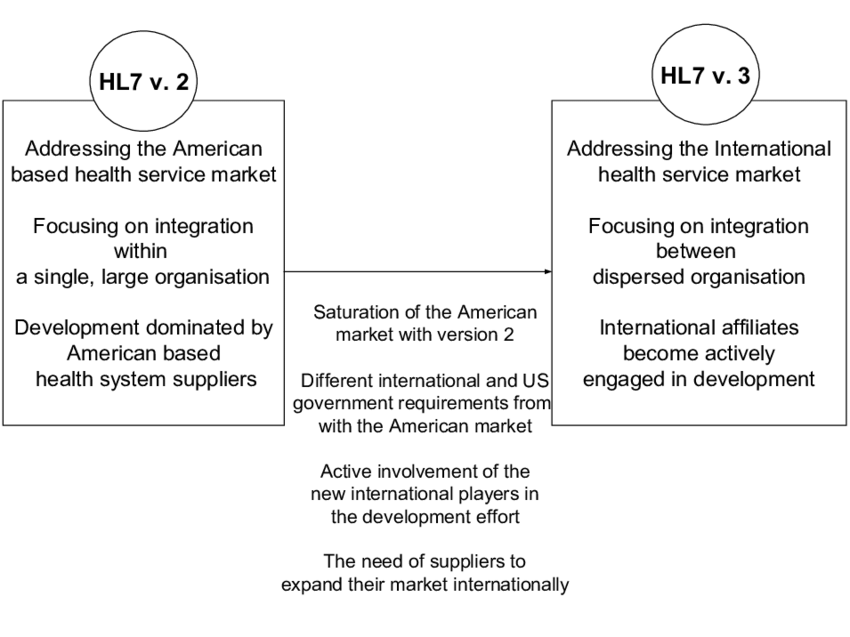
HL7 (Health Level Seven) is a set of standards that specifies how clinical and administrative data is exchanged between healthcare systems. While HL7 version 2.x has been widely used for many years, HL7 version 3 was developed to overcome some of the limitations of the earlier version. In this blog post, we’ll discuss the key differences between HL7 version 2.x and version 3.
HL7 Version 2.x

HL7 version 2.x is a widely used standard that has been in use since the 1980s. It is a message-based protocol that uses a series of segments to represent data. These segments are arranged in a specific order and contain fields that are delimited by special characters.
The main advantage of HL7 version 2.x is its flexibility. It can be used to exchange data between different healthcare systems and can be customized to meet specific requirements. However, this flexibility also means that there is no standardized way of interpreting data, which can lead to confusion and errors.
HL7 Version 3
HL7 version 3 was developed to address some of the limitations of version 2.x. Unlike version 2.x, version 3 uses an object-oriented approach to data representation. This means that data is represented as a series of objects that have specific properties and relationships to other objects.
The use of object-oriented design in version 3 provides several benefits. Firstly, it makes it easier to understand and interpret data. Secondly, it makes it easier to develop applications that can work with HL7 data. Finally, it provides a more standardized way of representing data, which can reduce errors and improve interoperability.

One of the main differences between version 2.x and version 3 is the structure of the messages. In version 3, messages are organized into “interaction models.” These models provide a standardized way of representing a specific type of interaction between systems, such as sending an order or receiving a result. Each interaction model includes a set of message types and data elements that are used to represent the specific interaction.
Another difference between the two versions is the use of terminology. In version 2.x, each system can define its own terminology for data elements. This can lead to confusion and errors when different systems try to exchange data. In version 3, standardized terminology is used for all data elements. This helps to ensure that data is interpreted consistently across different systems.

Conclusion
HL7 version 2.x and version 3 are both widely used standards for exchanging healthcare data. While version 2.x has been in use for many years and is flexible, version 3 provides a more standardized and structured approach to data representation. This can improve interoperability and reduce errors. As healthcare systems continue to evolve and become more connected, it’s important to understand the differences between these two standards and choose the one that is best suited for your needs.
